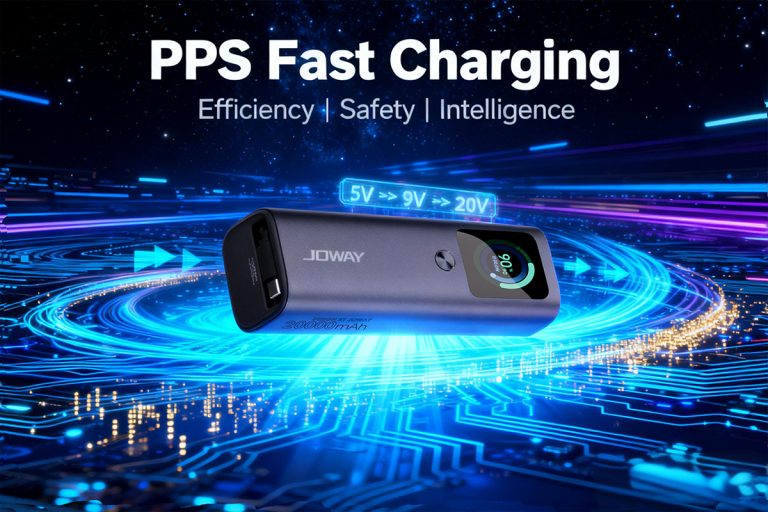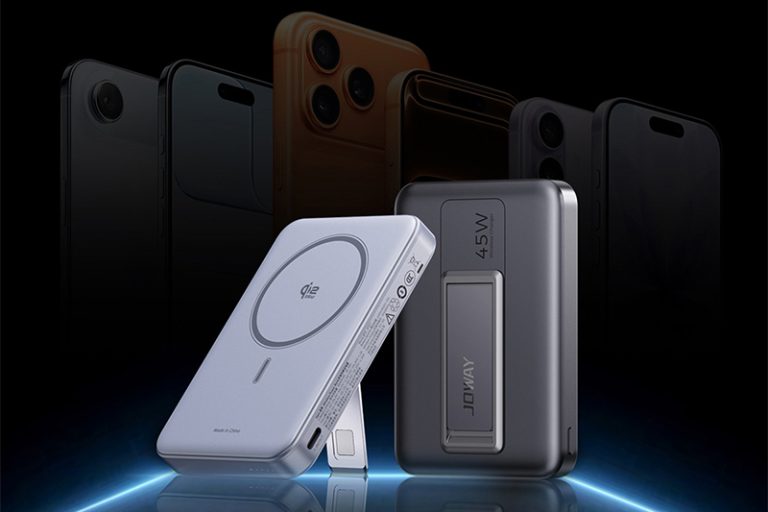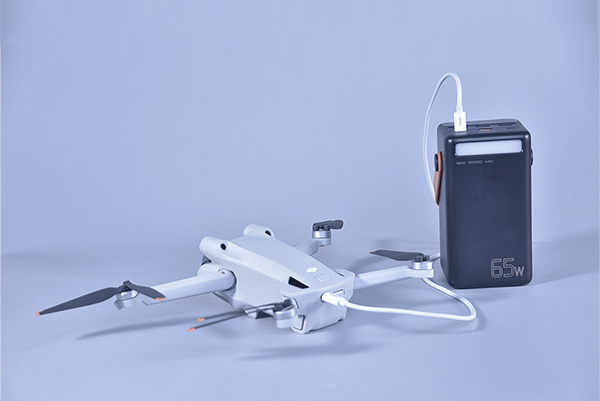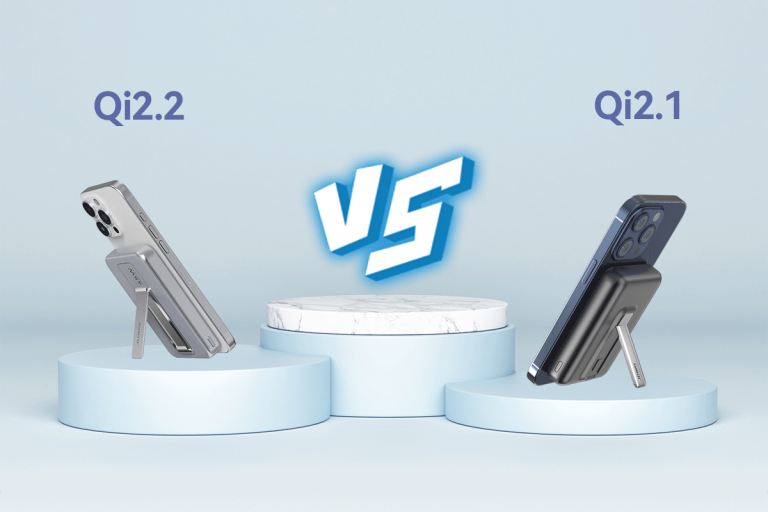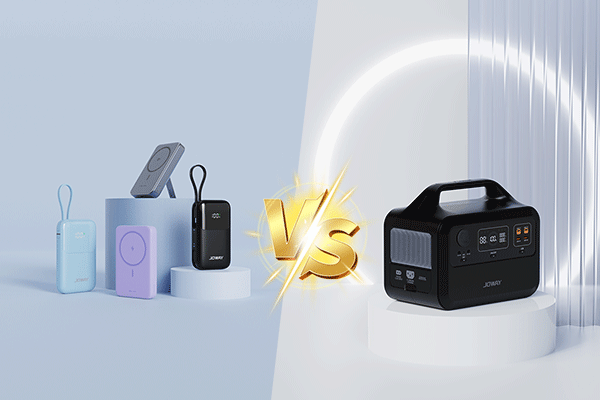Praised for its convenience, wireless charging also raises questions about safety—especially at faster speeds. Many worry it could hasten battery ageing. Drawing on our experience as an original manufacturer specialising in power-bank R&D, we examine the technology to assess any real risk to a handset’s battery. We also set out the key points brands should consider when commissioning wireless-charging power banks.

Here’s what we’ll cover.
- How wireless charging works.
- Whether the technology genuinely harms a phone battery.
- Practical ways to protect battery health.
- What drives heat build-up and dissipation during wireless charging.
- How to choose a reliable wireless-charging solution?
- Wireless charging: frequently asked questions
1 How wireless charging works
When the copper coil on the charger’s PCB is energised, it creates a magnetic field. The coil on the back of the handset picks up that field and generates alternating current (AC), which is then converted to direct current (DC) to top up the battery. That’s the wireless charging process in brief.
In essence: electrical energy → magnetic field → electrical energy
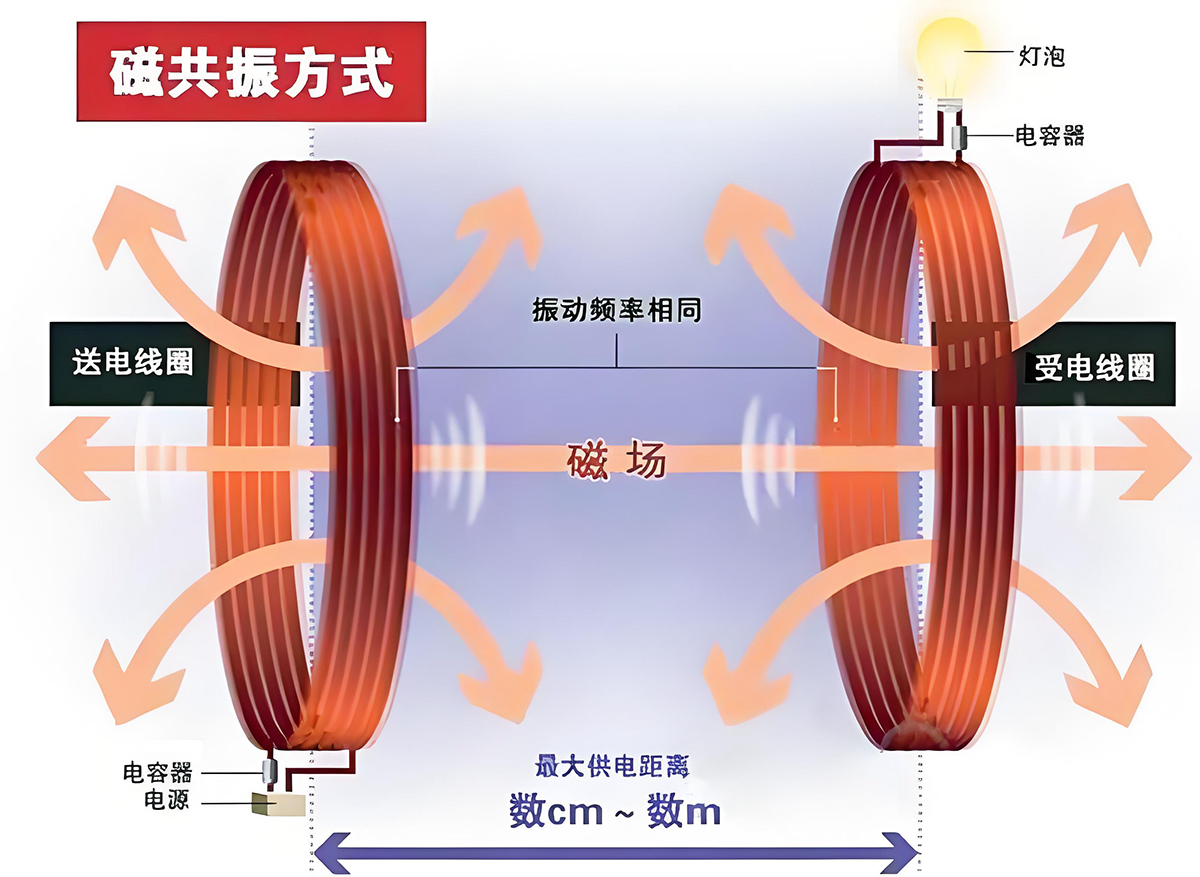
Wireless Charging Schematic Diagram
2 Does wireless charging actually harm the battery?
On its own, the technology does not harm a phone battery; heat is the real risk. While it typically runs warmer than a cable, modern systems are well managed. Most reputable brands include thermal protection, and smartphones have mature safeguards. Used properly, it is broadly safe.
A phone battery’s longevity is governed by its cycle count. A cycle means using 100 per cent of capacity and then recharging to full—it is not simply every time you connect a charger. Hitting the rated cycles doesn’t trigger instant failure; it means noticeable performance loss versus a new pack and shorter run time.
As for speed, higher rates create more heat—and high-wattage wired fast charging is no exception. When excess heat builds up, it leads to irreversible cell damage. Slower charging is gentler on battery health. Ultimately, thermal management is decisive, and high-power systems demand tighter control of heat and temperature.
Bottom line: wireless charging isn’t the culprit. Keep temperatures in check and maintain sensible charging habits.

3 Practical ways to protect battery health
While charging wirelessly, avoid graphics-heavy games; they encourage heat build-up that is hard to shed.
Steer clear of deep discharges and 100 per cent top-ups. Use partial charges and keep the state of charge around 20–80 per cent.
Avoid prolonged use in very hot environments, where cooling is compromised.
If it feels hot, stop charging and pause use. Remove the case to help the handset cool down.
Don’t default to high-wattage fast charging. Use it sparingly—ideally only when the battery is low.
4 Factors influencing heat dissipation during wireless charging
1) Thermal materials
Wireless-charging power banks commonly use aluminium-alloy shells. Inside, aluminium plates, silicone pads and graphene layers can accelerate heat transfer and cooling.
2) Structural design
A cleaner internal layout creates more space, improving airflow and allowing additional venting. Relocating hot spots and similar measures help curb temperature rise, enabling tighter thermal control.
3) Thermal control software
A wireless-charging power bank can lift real-world performance by refining its thermal management—employing high-sensitivity NTC sensors, sampling temperature more frequently, and using multi-stage triggers. When a threshold is met, the unit automatically scales back output to curb rising temperatures; at the upper limit, charging stops to prevent further heat build-up.
4) Ambient temperature
Conditions around the device directly influence cooling. Charging in cooler environments helps both the pack and the handset shed heat, reducing the risk of temperature accumulation.
In practice, engineers combine the above methods to achieve stable temperature control rather than relying on a single lever. For a deeper look at cooling, see [How to improve power bank heat dissipation?]…
5 How to choose a reliable wireless-charging solution?
If you need a power bank with wireless fast charging—or a bespoke option that prioritises cooling and safety—partner with a manufacturer that has proven credentials and technical depth. Look into the cell supply chain, the thermal materials used inside the unit, and the temperature-control software. Assess heat dissipation and safety holistically to protect overall product quality.
joway is an original manufacturer of power banks and offers:
√ Experience: over 20 years in the field, operating as a specialised OEM/ODM factory.
√ Quality assurance: complete certifications to meet international safety and quality standards.
√ R&D strength: an 80-plus engineering team with mature, market-ready power-bank solutions.
√ Production capacity: professional workshops delivering high efficiency, with automation in place.
6 Wireless charging: FAQs
Q1 Do Android phones support wireless charging?
A: Many models from brands such as Samsung, Xiaomi, Huawei, Honor and Google include this feature. To be sure, check your device’s model page on the manufacturer’s official site.
Q2 Can AirPods charge wirelessly?
A: Certain AirPods cases do. Examples include AirPods (3rd generation), AirPods (4th generation) with active noise cancellation, and AirPods Pro (1st/2nd generation). The standard AirPods (2nd generation) lack wireless charging, though a compatible wireless case can be bought separately. Third-party charger compatibility varies by product.
Q3 Does Apple Watch support wireless charging?
A: Yes. Every model in the Apple Watch range charges wirelessly using a proprietary magnetic system. Bring the charger to the back of the device and it aligns automatically for a stable charge. Support from third-party chargers varies, so check the specific product.





